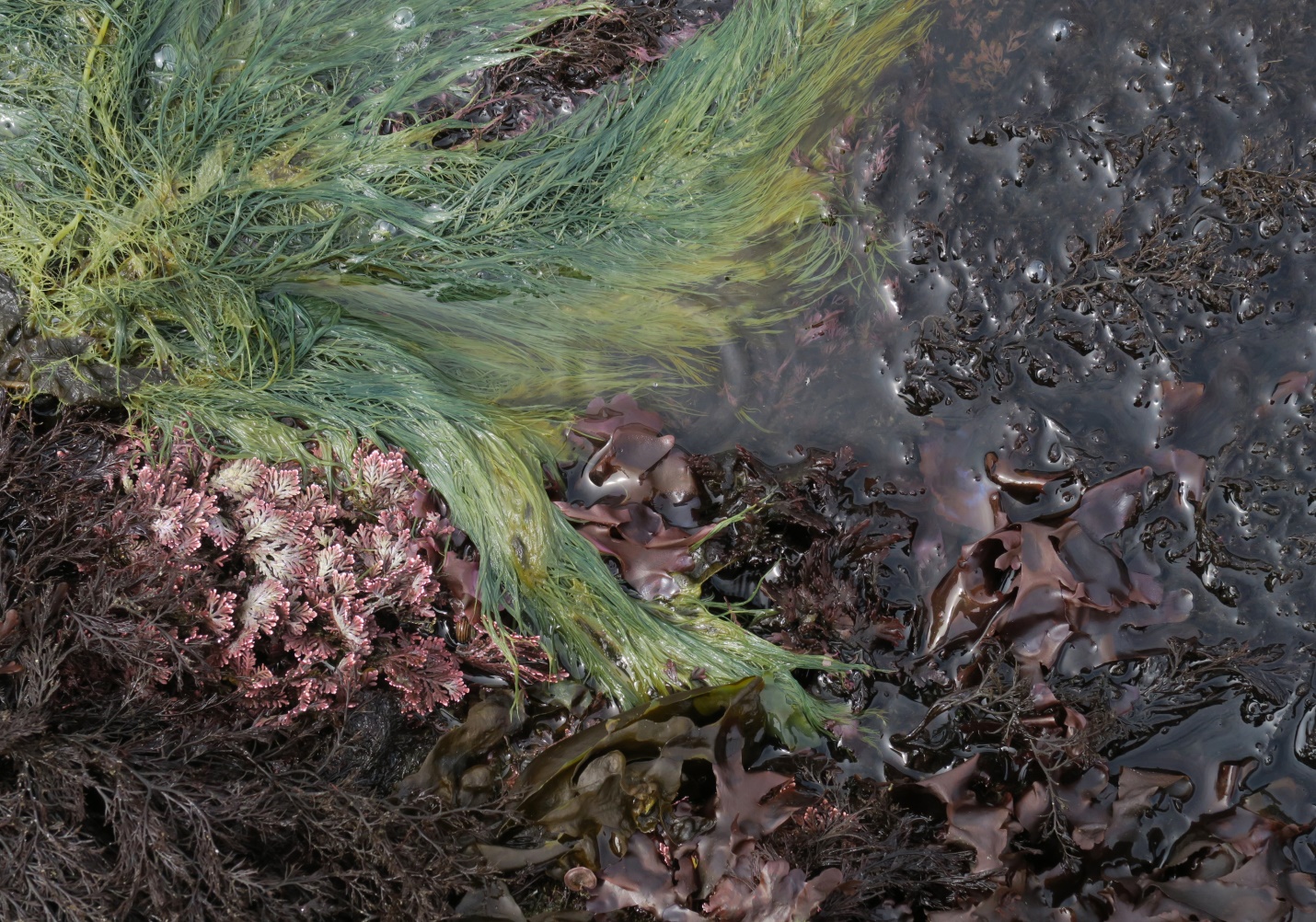
Odonthalia floccosa
Sea Brush
28 May 2021
Botany Bay, Juan de Fuca Strait
Tide: 0.0 foot tide 09:23am PDT (measured at Port Renfrew Tidal station); -0.7 ft tide 10:18am PDT (measured at Sheringham Point Tidal Station)
Conditions: Wind, SW 20 – 30 km per hour, moderate southwesterly swell, overcast, no precipitation, 11˚C.
Phase of Moon: Waning Gibbous (approx. 54 hours into this phase at time of collection); (Previous Phase, Full Moon, 26 May 2021 at 4:13am PDT: Next Phase, Third Quarter, 2 June 2021 at 12:24am PDT.)
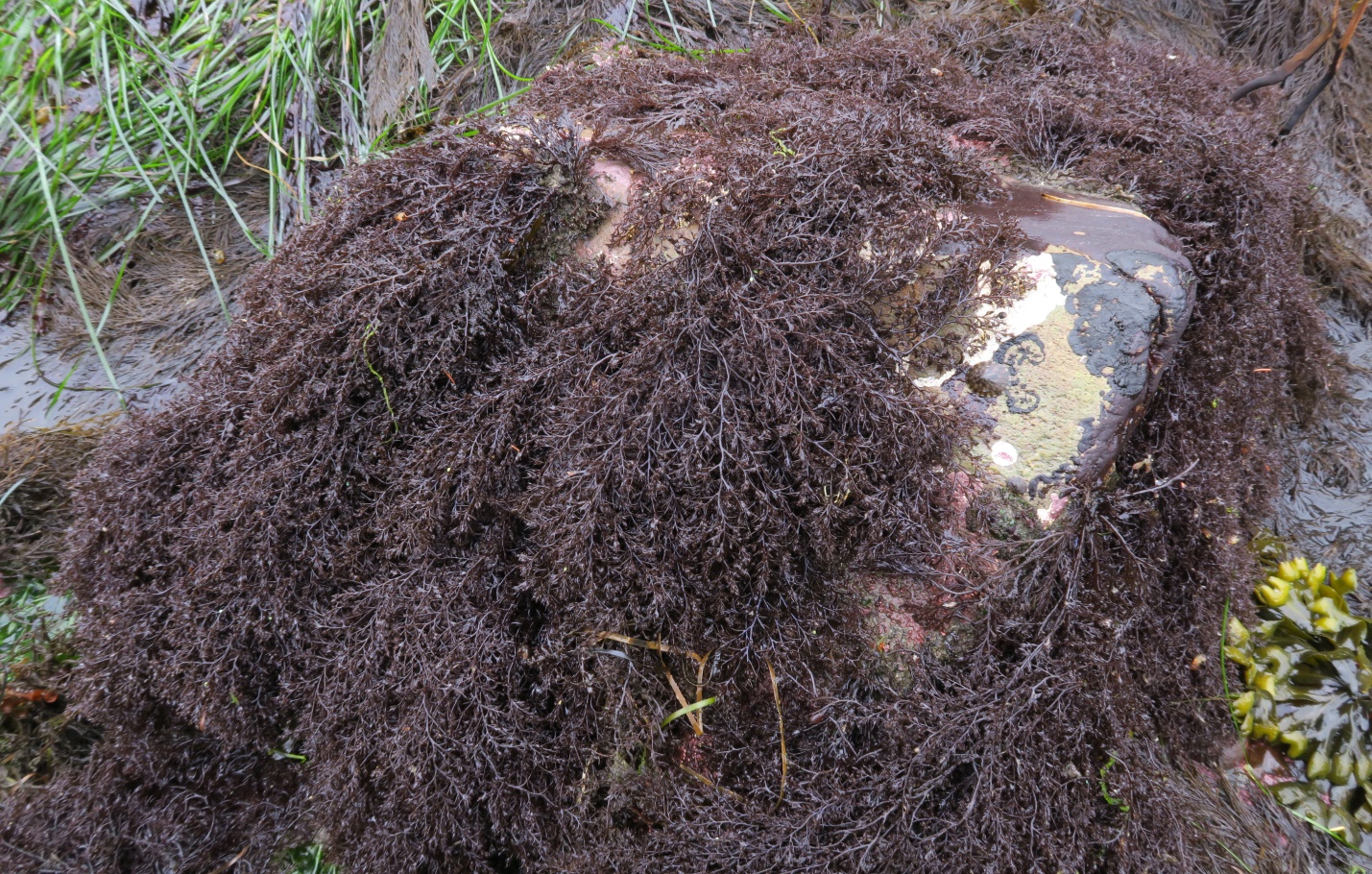
Figure 1: Odonthalia floccosa is really looking like a ‘brush’ pile here, as it densely carpets this low intertidal bolder. Its particular brushy growth habit creates safe habitat for many other marine life forms. Botany Bay, Juan de Fuca Strait, B.C., Canada. May 28, 2021. Photo ID 27519 ©Seaweedwhisperings.com
Person 1:
Erratic branching pattern.
Coarse texture to the touch.
Very little branching near base.
When newly wet has a shiny attractive appearance.
Lies down like thick coarse hair – does this help preserve moisture when the tide recedes?
Strongly attached to rocks, difficult to dislodge.
Crunchy but no taste or smell.
It’s rather inert when waiting for the tide to come back in – blah personality.
Not much to say, not much to share.
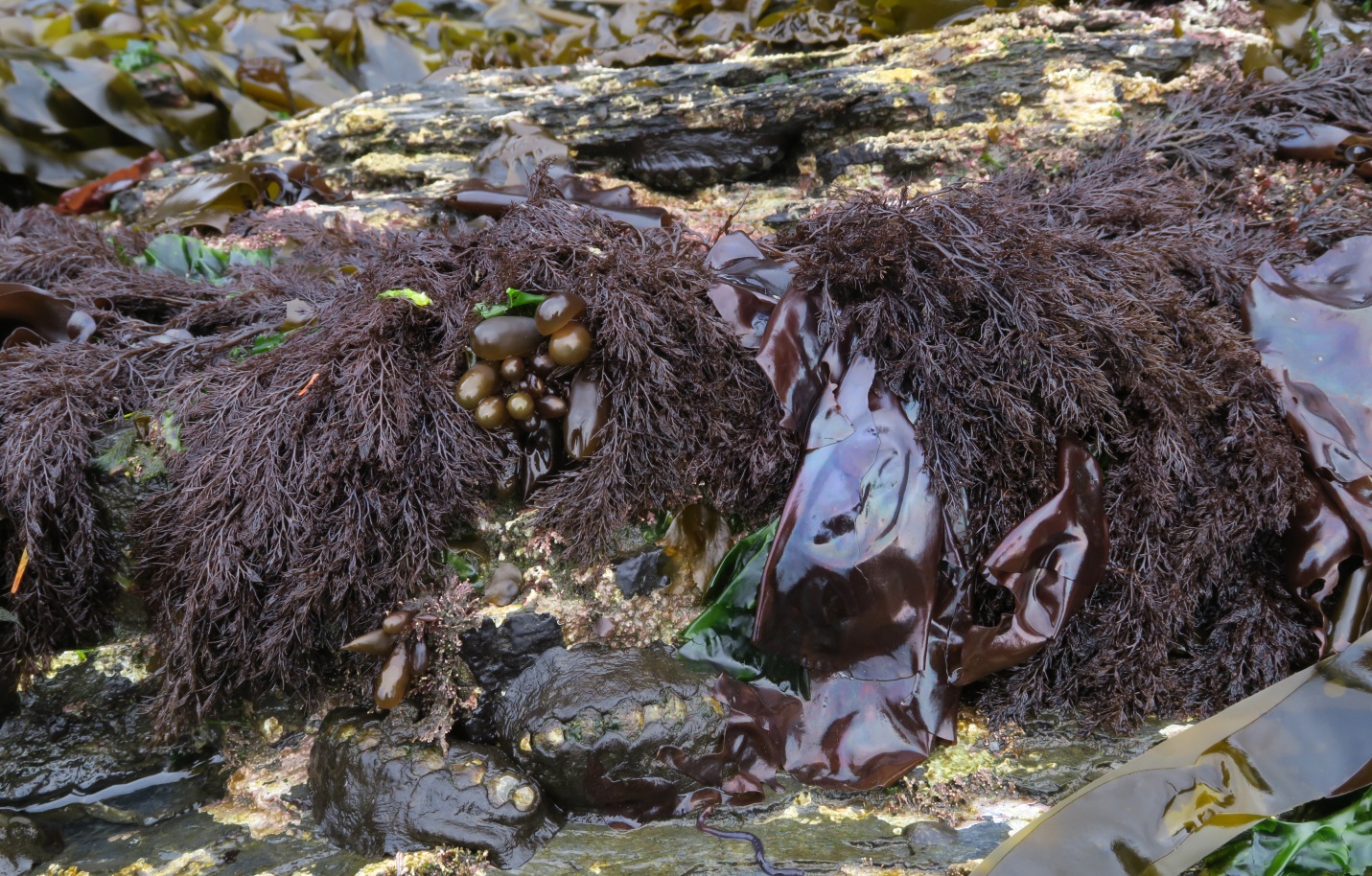
Figure 2: Viewed from slightly below and upward, Ondonthalia floccosa is the lacy dark red seaweed pictured here with some black ‘Katy’ chitons (foreground) and some Mazzaella splendens & Halosaccion glandiforme algal neighbors. Many other neighbors live secreted within and beneath the brushy expanse of Ondonthalia. Botany Bay, Juan de Fuca Strait, B.C., Canada. May 28, 2021. Photo ID 27520 ©Seaweedwhisperings.com

Figure 3: Viewed from the top of the same rock crest as seen in Figure 2 and looking out and then down, this angle reveals the flatter basal branching pattern of Sea Brush. This part of the seaweed can look rather different than the tufted pointy ended clusters. Botany Bay, Juan de Fuca Strait, B.C., Canada. May 28, 2021. Photo ID 27521 ©Seaweedwhisperings.com
Person 2:
Lovely deep purple-y brown color.
Delicately branched.
Grows in large sprays on rocks like hair atop the crest of the rocky outcrop, and drapes and cascades down in a spray.
Tiny branches that seem to have either pointy ends or some kind of balled up ends.
Branches are delicate but main thallus is strongly attached – this must be how you endure at the wave swept top exposure of the rocks.
From a distance you are attractive and gently alluring.
Up close a bit busy, confusing, it seems to be somewhat at cross-purposes..., with yourself?
Are you trying too many things at once?
Do you want to slip into the background while you sort things out?
Delicate, deep even color and looks almost lacy from the distance – prefers to be observed/interacted with from a distance.
Up close, things don’t often look so good; and you’d rather that that not be known, Sea Brush.
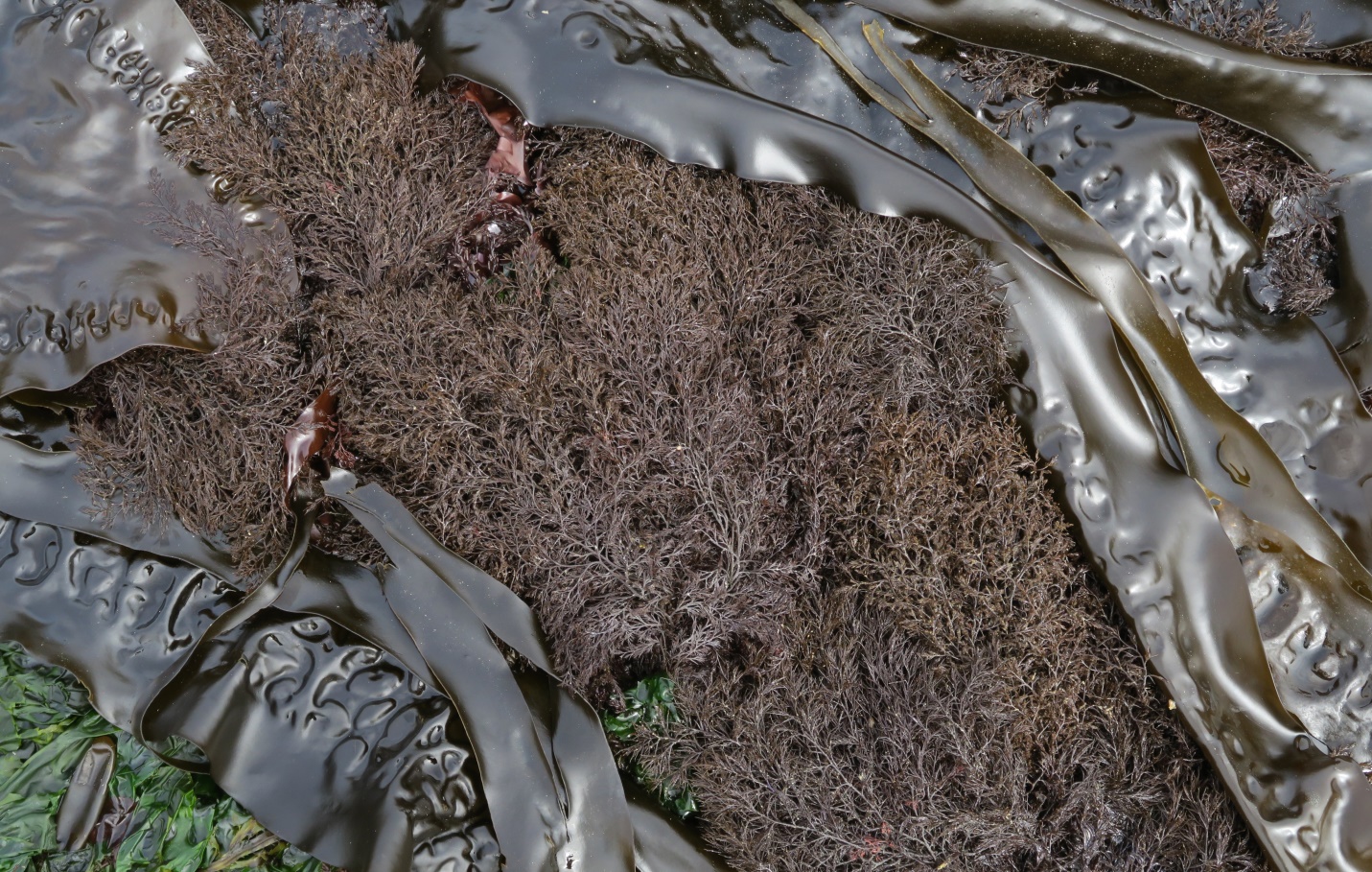
Figure 4: This expanse of Sea Brush is seen at another location on a low tide one month earlier. Here it awaits the returning ocean swells alongside some large bladed brown alga – Saccharina latissima or Sugar Kelp. It is interesting to note the two very different ways of having a “large” presence represented here by Sea Brush and Sugar Kelp. Gonzales Bay, Juan de Fuca Strait, B.C., Canada. April 28, 2021. Photo ID 27522 ©Seaweedwhisperings.com
Discussion:
Inert, blah, not much to say.
Dark colored and forms the background.
This is part of the story, and the other part is that Sea Brush has a “large” presence where it grows. It creates a type of habitat that is of value to others.
Is that quite enough? Being there with its particular physical presence?
There is nothing much else to do.
What else can this make possible amongst the proliferation of branches and branchlets? Perhaps, we’ll ‘listen’ another time, Sea Brush, and see if there is more we can hear.
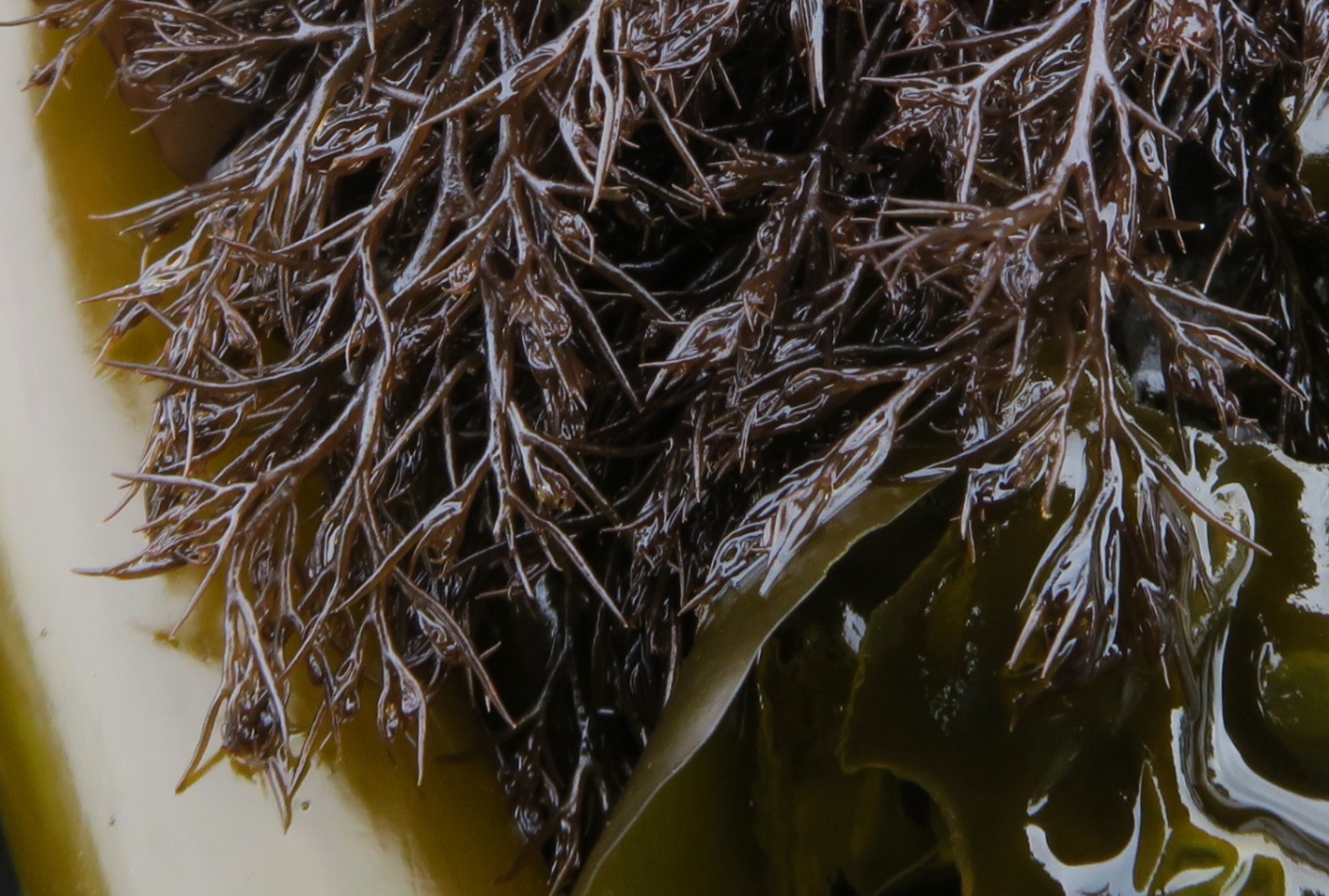
Figure 5: Odonthalia floccosa, Sea Bush, viewed very close-up to show the strongly pointed tertiary branch clusters. Botany Bay, Juan de Fuca Strait, B.C., Canada. May 28, 2021. Photo ID 27523 ©Seaweedwhisperings.com
Biology & Natural History Information:
Description:
Thallus is dark red to brownish black, attaches to rock via a discoidal holdfast, and grows to 40 cm tall. Branching is profuse and alternate, with branches cylindrical to somewhat flattened basally and arranged in two rows on opposite sides of the axis. The flatness opens up to bushy in the tertiary branches and they bear clusters of short, notably pointed branchlets that produce a “tufted” look. The freely branching nature gives this seaweed its distinctive busy appearance. Branch tips may bleach light brown.
Habitat:
This perennial red alga is found on rock in the low intertidal region of semi-exposed and semi-protected habitats with moderate currents or surf.
Distribution:
Bering Sea and Aleutian Islands, Alaska to Santa Barbara County, California.
Remarks:
This seaweed forms dense clumps and can be a host to epiphytic algae such as Leathesia marina (Sea Cauliflower) and the saccate brown alga, Soranthera ulvoidea (Studded Sea Balloon). The dense mats formed by Odonthalia give cover and reduce desiccation impact for an array of less conspicuous algal and animal life. This seaweed also “houses” many zooplankton (floating animals). While working as researchers at Dalhousie University Tomas Probyn and Tony Chapman described a potentially mutualistic association between zooplankton and this bushy brown seaweed; the seaweed-inhabiting zooplankton nurture the alga with their excrement at times when nutrients are seasonally poor and thereby also enhance their home.
The genus name, Odonthalia, is from the Greek meaning “toothed branch”.
Classification:
Phylum: Rhodophyta
Class: Florideophyceae
Order: Ceramiales
Family: Rhodomelaceae
Genus: Odonthalia
Species: Odonthalia floccosa (Esper) Falkenberg 1901
Former name(s): Bisionym, Fucus floccosus Esper 1802; Fuscaria floccosa (Esper) Ruprecht 1850; Lophura floccosa (Esper) Kützing 1843; Rhodomela floccosa (Esper) C.Agardh 1822.
Figure 6: Odonthalia floccosa can often form a strong part of the “mix” of the low intertidal seaweeds – here it is the deep red-brown lacy seaweed that is growing everywhere between and forming the background for other macroalgae including Desmarestia viridis, Mazzaella splendens, Corallina vancouveriensis and Osmundea spectabilis. Gonzales Bay, Juan de Fuca Strait, B.C., Canada. April 28, 2021. Photo ID 27524 ©Seaweedwhisperings.com
![]()
